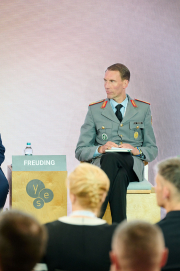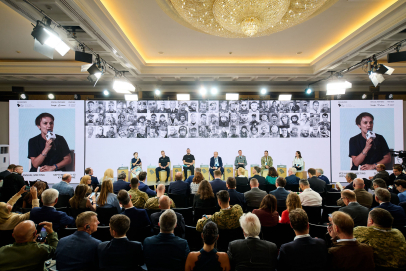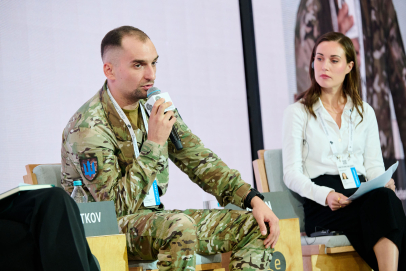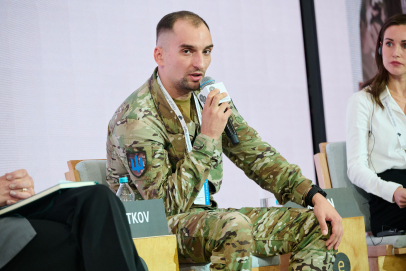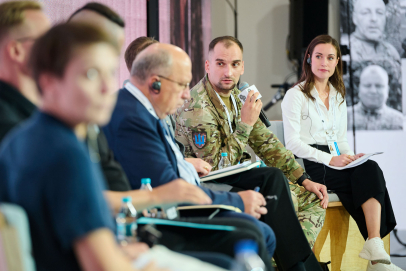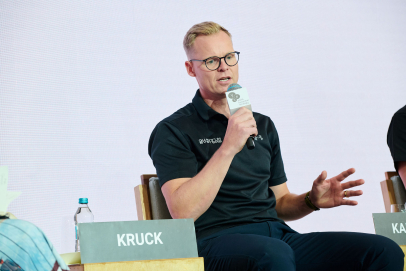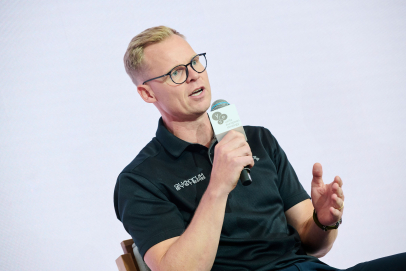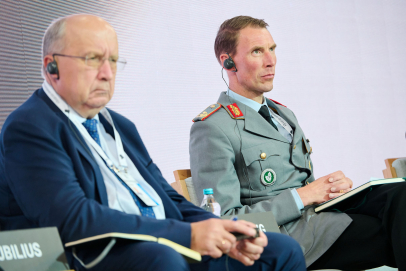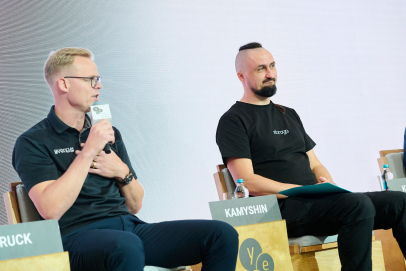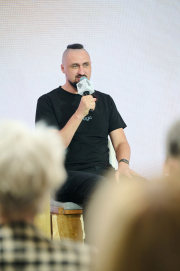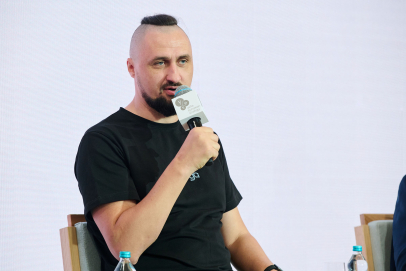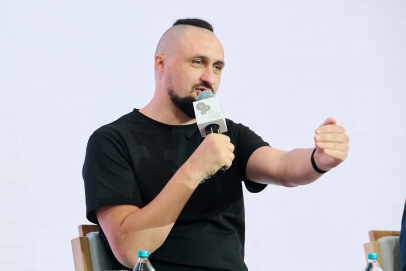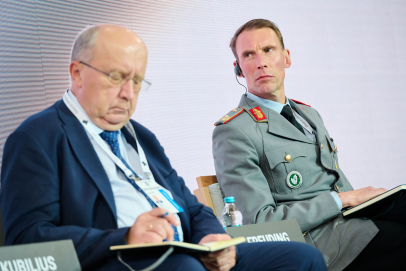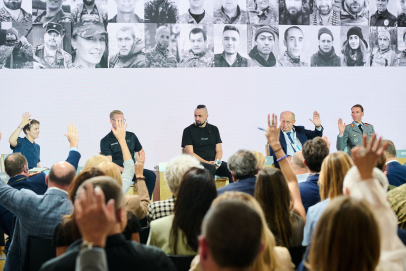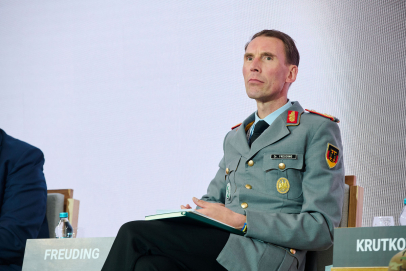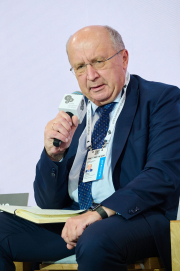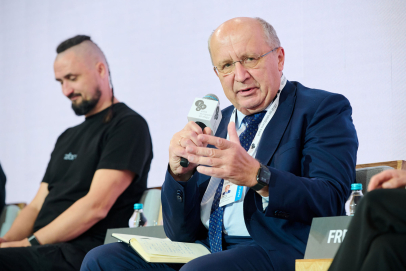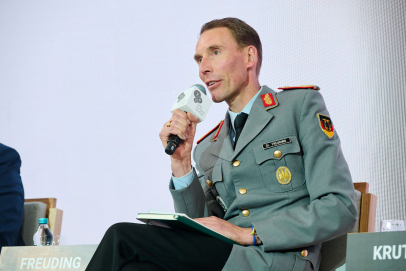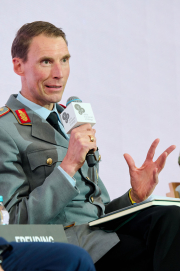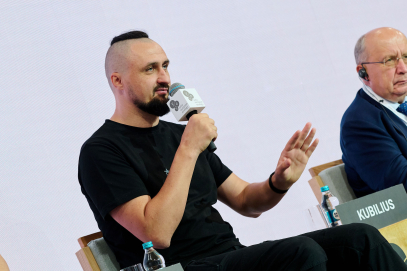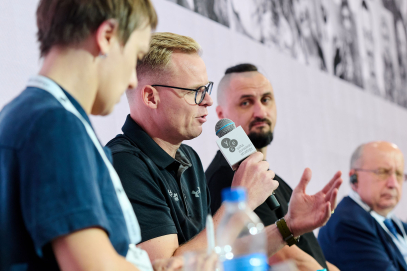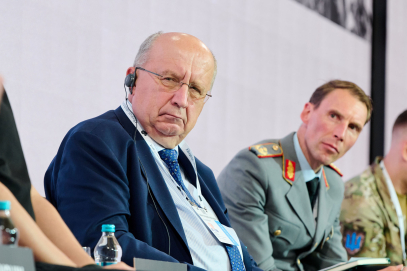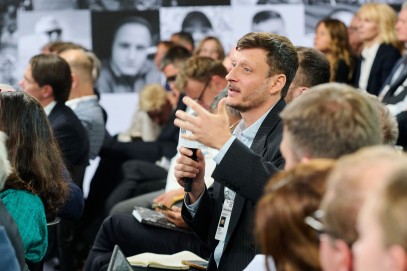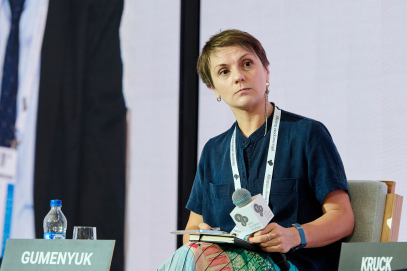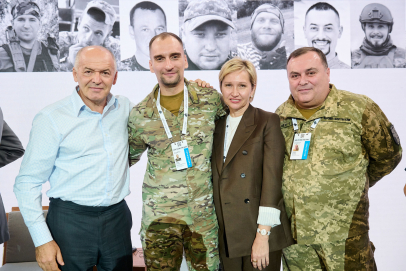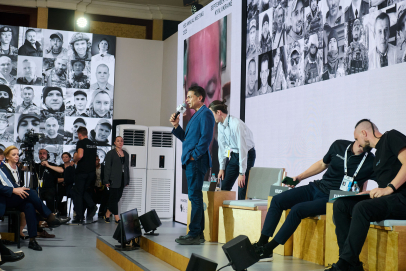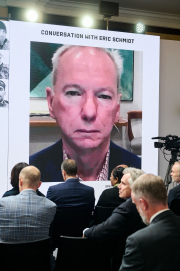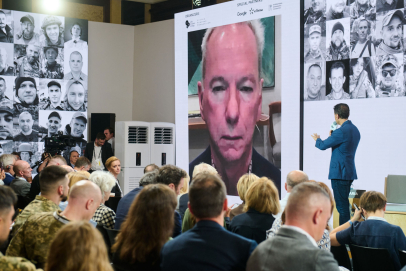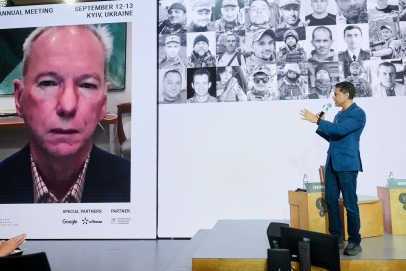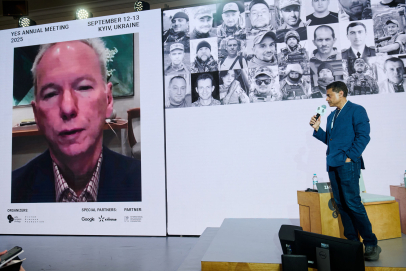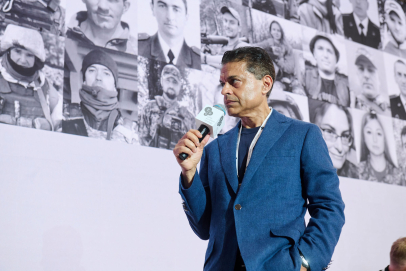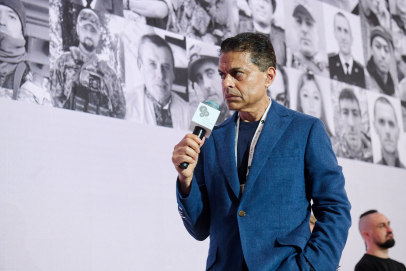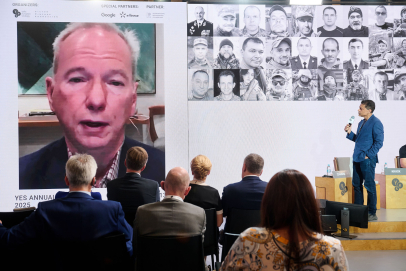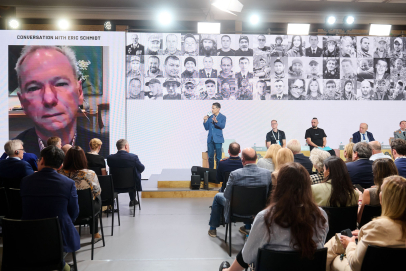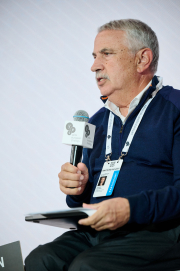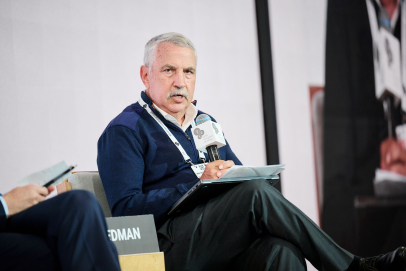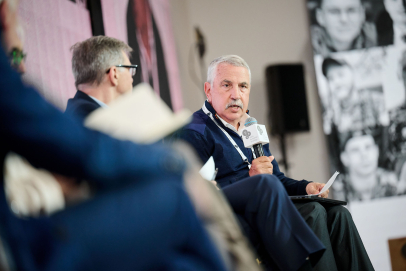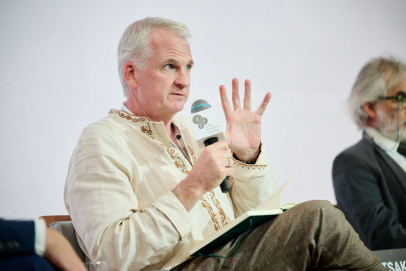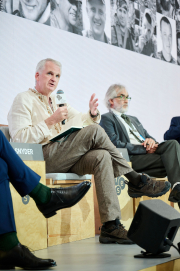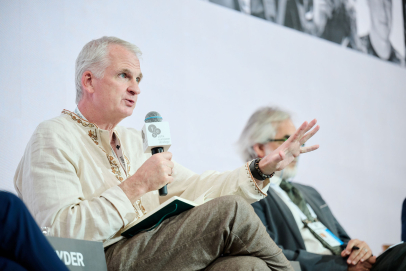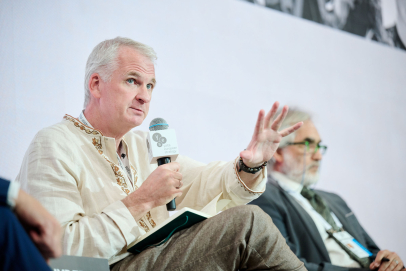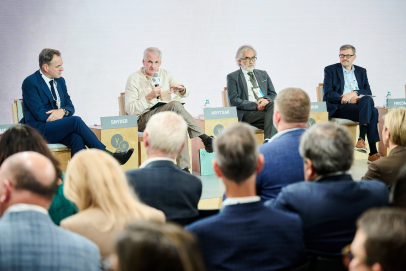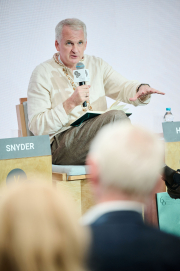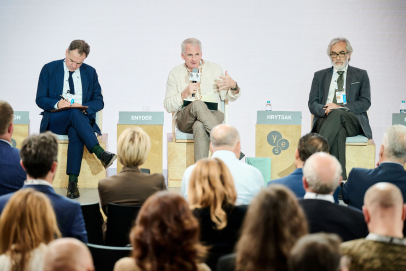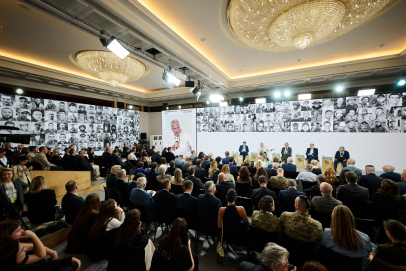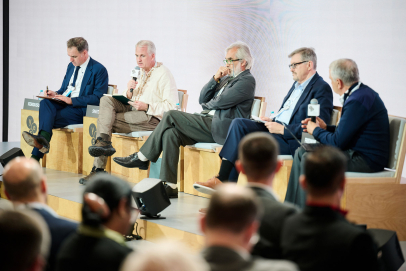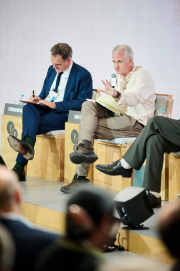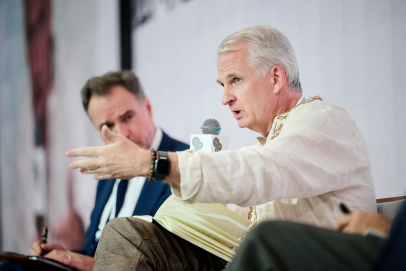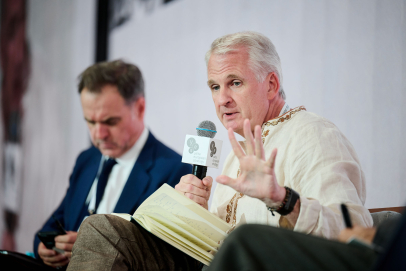Press about us
A Sea - from within. Once again about the Ukrainian "Poem" at Biennale
Venice Biennale is, of course, not a one-time art event set in certain chronological frames. Obviously it is not bounded to a particular "information occasion". This is somewhat similar to paraphrasing Hemingway, "Rejoicing that never ends...". Therefore, going back to some pavilions, it would be great to understand not so much the art of "today" but to think about the art of "tomorrow", which is, by the way, near at hand. The following is a transcript of an interview with Mr. Alexander Solovyev, art-critic and one of curators of the Ukrainian project "A Poem about an Inland Sea".
Commercialization of Venice?
- Is it possible, in view of participation of the Ukrainian pavilion at 52nd Venice Biennale, to talk about a certain breakthrough of the Ukrainian contemporary art in the "thickets" of contemporary art?
- It is possible. I saw a lot and there are lots of things to compare with. I can clearly state that we among, maybe not the top five, but among the top ten, that's for sure. There is nothing strange about it. The conditions created by an independent institution PinchukArtCentre, were wonderful, indeed. Promoting was at the highest level. It's another matter that most of the success could be attributed to foreign participants. There were a lot of star names. Nobody denies this fact. It was a special promotion technique to attract attention to Ukraine with the help of stars, because many people still do not know the country in question. However, in general, the Ukrainian artists seemed to set the pace not they. Bratkov, Hnylytskiy and Mikhaylov. Therefore, it can be asserted that that such an alliance "played into our hands, since the outcome turned out to be a decent one.
The Ukrainian pavilion in Palazzo Papadopoli
- When we talk about involving foreign stars it refers not only to an obvious goal on attracting attention, there is yet one more important aspect noticed by nobody. It refers to how Ukrainians perceive contemporary art, and how they represent themselves...
- This is what the initial concept consisted - to look at yourself both form outside and from inside. In this case - the "roof" of the Ukrainian pavilion prevailed, Ukrainian project that was free to choose participants. The approach is correct. However, proportion nuances still remains an open issue. It's hard to say to what extent this or that artist's participation was appropriate, whether he or she was presented fully enough matching the overall context...
- Do you think the title "A Poem about an Inland Sea" was fully incarnated?
- I find it a bit unethical to talk about it.
- ...Is it possible to assert that there is poetry within the represented works? The poetry that the Ukrainians are hiding behind?
- Sure, there is! If we talk about the work by Hnylytskiy/Zayats, this is a super- poetical work! If to take the work by Mark Titchner under the title "We are Ukrainians", this is also a specific poetry. The poetry of gloss.
"A man walks by as an owner..." V. Pinchuk in Venice
- The Poetry of promo searching?
- A certain level of American thinking i.e. working with some elements of mass communications. Boris Mikhaylov has poetic things. At the same time, he has got tough things in his project.
Names and titles are relative in fact. The more loose a name is the better it is for art. It provides an artist with freedom of manoeuvre. Strict supervisory control which prevailed for a long time no longer exists. A curator's activity today consists in providing an artist with complete freedom, arranging all processes into a general set in order to get something integral and meaningful. As for the structure of the title: there are a lot of connotations for it ... The keyword is a "Poem", the other one is an "Inland Sea" to which a lot of connotations may be found as well (starting from Dovzhenko to a Spanish art director Alexandro Amenobara with his film "Sea from within"). One can perceive it as a metaphor of an internal world, internal screen, which was, in fact defined by Stanislavskiy in his theatrical system. Lots of things can be seen including creative techniques and poetry. One can decipher every thing at a theoretical level, but is it worth doing so? Eventually, this is not a name that determines a pavilion, but level of authors and their works showcased in there.
- As far as I can understand, these works are commercially plausible. Is it important for Venice Biennale?
- It is a difficult question. Documenta Kassel was opened the other day. I met Marat Gelman, read information about the opening ceremony, looked though a few quotations and comparisons. This is why Kassel exhibition differs from Venice for better. There is more art indeed. Everything is being done much seriously. There is no glitzy excess, parties or pathos. The visitors here are not Bohemians but students, young smart people. There is less lint towards a commercial art. Concept prevails exactly over costs. Therefore, the Documents is and has been an opponent event.
Lesya Zayets is in her virtual room project
According to some experts Venice has held a kind of art-fair this year. This IS a commercialization. There is one more unpleasant fact for art in general that can be noticed in Venice - everything is being performed at a gallop pace.... Art needs evaluation and careful attitude. Kassel stands out from Biennale in this respect.
Obviously, those authors and their works which were presented in Venice, were also presented at the largest art-fair in Basel. So this year we can witness an art-marathon consisting of the four major art events held in: Venice, Basel, Kassel and in Munster (sculpture festival biennale was opened there). Everything is being interrelated. Image tasks are tackled in Venice whereas in Basel they are filled with substantive content. A great deal of aspects depend on how successful an artist was in Venice.
As for our works, some of the most successful ones will be purchased by PinchukArtCentre. This is, at least, what is being negotiated with the artists.
- What particular works are you referring to?
- I am one hundred percent sure it is going to be two Ukrainian authors, Bratkov and Mikhailov. Sam Teylor-Wood, as well. I think they will consider Teller. However, this is just a tentative forecast
Contemporary art of China (Chinese pavilion)
- Is there any "perfect" pavilion at 52nd Biennale? A perfect national presentation?
- It seems to me that the British pavilion was the most self-contained one. The works by Tracy Emmin is a project where she displayed her erotic graphic arts, elements of installation, slogans in light expression.
For me this was the sign of returning to art, a bit old-fashioned one, however perfectly balanced on the background of other pavilions, dominated by super-globalism ideas. There were many multi-image screens and quasi-scientific research elements. There were projects packed with extreme identity searching. The British pavilion seemed to be the most interesting among them. The Chinese project is also a self-contained one. The industrial area space itself gives to the pavilion an extra zest. An interactive Mexican project was good. One should also mention the Danish paintings of two artists. To my mind, the Russian pavilion has legged behind for 10 odd years. With its missionary message to surprise the world with the help of Russian media technologies is irrelevant within today's world art.
- The Russian pavilion has stirred up huge controversy, however it expressly showed an obvious thing. A national representation is an instant reflecting how people in a single country view contemporary art. In other words, this is the instant of evolution of this outlook and approach. It is natural for the people in Russia have finally "seize" upon media-technologies, mastered them more or less properly and demonstrated a high standard of such local quality, which might have been tried out by the rest of the world a long time ago. However, it is important within the framework of the national cultural evolution. And I think that this is exactly what all national pavilions demonstrate as a rule. Including us. In Russia's case, we can see a development of media facilities; in Ukraine's case, we can witness evolution of style.
- You see, multimedia has different messages. Russians presented it as a super-missionary task. And for Hnylitskiy and Zayats used it simply as facilities. Facilities for creating certain poetic style.
- Why are you very reticent about the favourite of Audience Choice - French pavilion?
- This is just an example of super narrative of contemporaneity. For me personally, in spite of all of accuracy and progress, this project contains too little of art.
- In other words the British pavilion showed avant-garde has more traditional things, like neoclassicism?
- Exactly. I could feel that there was a trend of return, recurrence to what had already been tried 20 years ago. Now, a special emphasis is placed on the things which, seem to have no longer applied in avant-garde of contemporary art. But al of a sudden they have been reanimated and are being viewed in a new fashion. For example, Zigmar Polke or Gerhard Richter being classics whose works look more contemporary than those produced by many modern authors.
- Why Africa then? In fact the African project got the prize straight off for contribution to art.
- Because it's been the year of Africa. By the way I visited this exhibition in a more expanded variant in contemporary art museum in Stockholm. I also saw the famous curtain made of lids, and... However the scandal in Venice was kicked up exactly because of this - between a curator the commissar of Biennale. It happens quite frequently when people accuse one another of violating ethical issues. The curator asserts that there was agreed a certain engagement around the African exhibition including a commercial one. These are all elements of policy, art-policy. Last time there was a Latin American project, because the curators were curators were Latin Americans. Geography can be easily traced here. Today's curator is Robert Storr. He is American. He is a very competent expert and he represents a world-known Museum of Modern Art. So this is normal that lion's share of participants are Americans, in spite of such a wide ethnic spectrum: Italians, Africans, representatives of other countries who live in the USA. It was particularly noticeable. Last time there was Rosa Martinez, a Spanish curator, and there was a greater appeal towards Latin American and Spanish-speaking audience.
Of course, it invites certain questions. If some global exhibitions are arranged, one should approach to them more carefully. And from the other hand, this is a choice of a curator who would usually offer things at his own discretion. As for discovering some new trends or new names, this biennale can boast of nothing.
...What does it mean to be at Venice biennale? And moreover, what is it to be among the top - mostly discussed, expected, impressive and inspiring? One just cannot make away only with national emblems. In Venice, if anywhere, one can see with half an eye disposition of a country, its society's atmosphere and presence of artist therein, who, in spite of its remotablity and inwardness, reflects evolution of cultural process one way or another.
The main goal of Venice biennale is to ensure contemporary representation of either Russia, Ukraine, or Europe, Asia and Latin America. The key point is competition.
Ukraine, in spite of its short history (starting from 2001) of official representations at Biennale, entered the fight vigorously, and immediately managed to set its pavilion among five the most expected ones and justified expectations.
On the opening day, in front of a subtle gate of Palacco Papadopoli, beyond which one of the works by Sergey Bratkov stood out, depicting a grimy steelworker holding a slogan that read "All Palaces to the workers", there was standing an air-tight bohemian crowd willing not only to look at how Ukraine was presented by the world art stars but also, frankly speaking, to eat chicken Kiev and varenyki with borsch.
In their statements the four Ukrainian artists, who were recognized everywhere but their native country, and the four foreigners, who took the risk of binding their widely promoted names to a vague and quite unpopularized culture, asserted, above all things, that Ukraine did have a clear understanding about contemporary art... And that there was the so-called rehabilitation of style... Rather than about spasmodical searches of identity. The task on "modernizing'" Ukraine, in the eyes of Venice art-merchants, was successfully accomplished. Pinchuk allocated one million Euro to the project, and obtained for that a powerful promotion, Elton John's, George Soros's visit to the Ukrainian pavilion and won an Italian aristocrat's favour to our art. Princess Bianca Arrivabene, the owner of Palazzo Papadopoli, coquettishly kept avoiding Ukrainian TV cameras, ducked curtsies to our artists, stating that pictures by Boris Mikhaylov were among her favourite ones. However, it is obvious that the media-project, a two-room video installation "Institutions of Unstable Thoughts" by Alexander Hnilitsky/Lesia Zaiats happened to be the most successfully "blended" into the interior of the palace.






















































